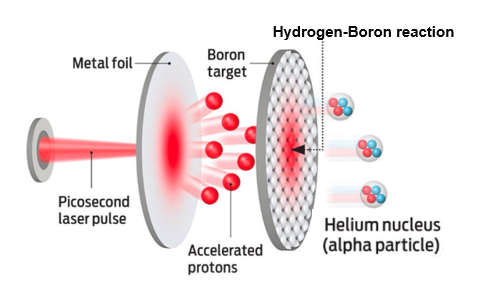Technical Principles
The entity that contains the bombarded nucleus is called the nuclear target. It is usually in the form of thin film supported by a metal frame. The material containing the nuclear target element is firstly deposited on a flat substrate by the physical or chemical vapor deposition. Then the coating film is carefully peeled off by the wet etching and finally fished out on a metal frame with to obtain the self-supporting nuclear targets.
Significance
The nuclear target preparation technology has multiple advantages of low heating temperature, short preparation time, high quality and wide application. The development of a self-supporting nuclear target is crucial in acquiring accurate data in the Hydrogen-Boron reaction because no interference of the frame element exists. Our developed self-supporting thick nuclear targets will play an import role in multiple fields of low energy nuclear physics, laser nuclear physics and atomic nuclear chemistry.

Application of Boron target in Hydrogen-Boron reaction fusion experiment
Technology Status
ENN has built up the advanced fabrication platform of magnetron sputtering physical vapor deposition (PVD) and chemical vapor deposition (CVD), which is capable of preparing the pure Boron target and Hydrogen-Boron target with tunable thickness of nanometer to micrometer in order to meet different fusion experimental requirements. The self-supporting large-area thick boron target is successfully prepared, which has been rarely achieved in the field. The boron targets are used in the experiment of Hydrogen-Boron reaction for revealing the physical mechanism of the fusion. The technology of the boron target preparation has been successfully applied in multiple collaborative cutting-edge fusion projects with Peking University, Institute of Modern Physics (CAS) and Shanghai Institute of Applied Physics (CAS).

Magnetron sputtering physical vapor deposition (PVD) Chemical vapor deposition (CVD) The large-area thick Boron target on the holder